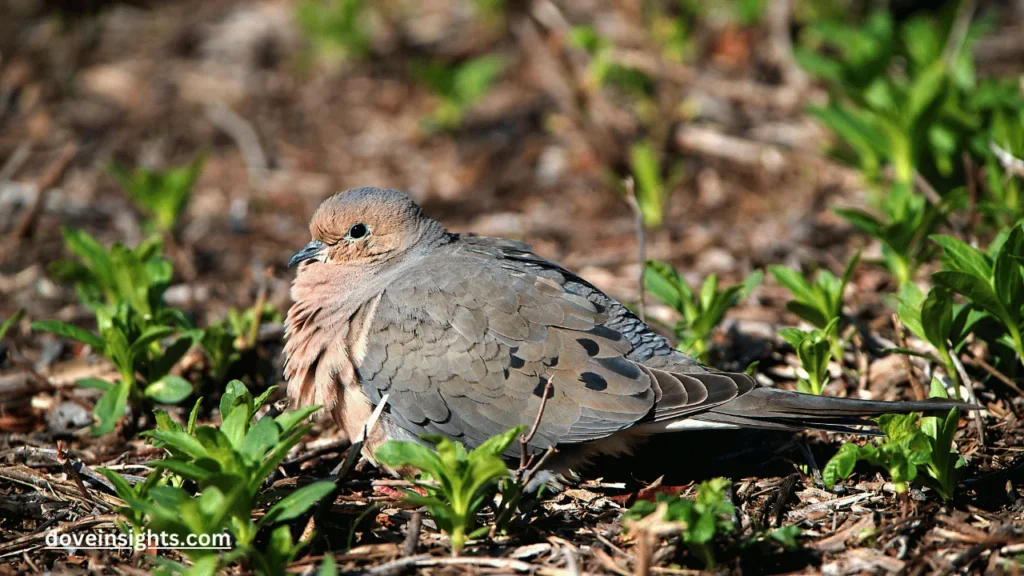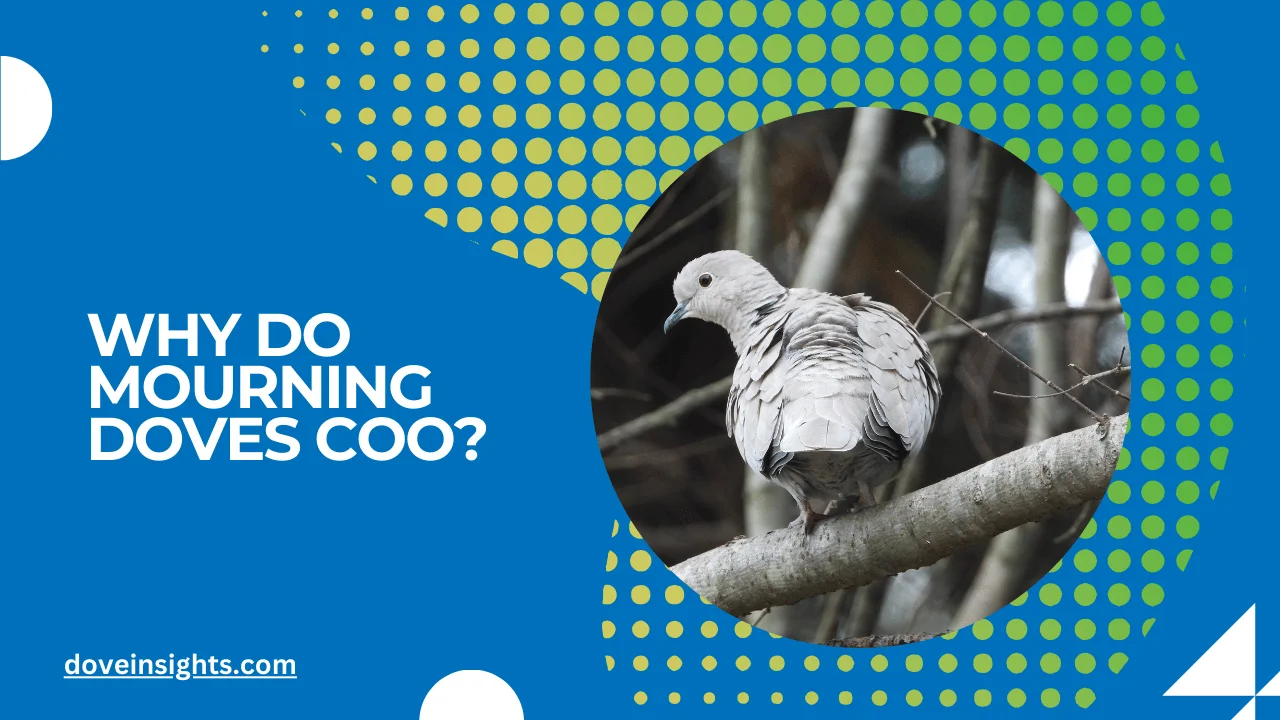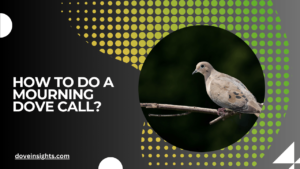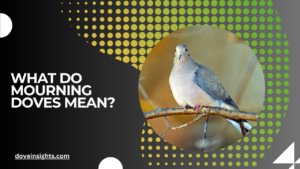The soft, rhythmic cooing of a Mourning Dove is a sound familiar to many, yet its true meaning remains a mystery to most.
These gentle birds, often seen perched on branches or foraging on the ground, communicate with a language that transcends words. Their cooing, while soothing and melodic, carries significant meaning rooted in their survival, relationships, and emotional expressions.
But have you ever wondered why they coo and what their seemingly melancholic song conveys?
Understanding the language of birds opens up a world of fascinating insights into their behavior. Mourning Doves, with their iconic “whoo-whoo-whoo” call, use their voice not merely for beauty but for practical reasons, such as finding a mate, staking a claim, or even issuing a warning.
Their cooing, often misinterpreted as a sound of sorrow, is a complex form of avian communication that plays a pivotal role in their lives.
In this article, we’ll dive deep into the world of Mourning Dove cooing, exploring the reasons behind their vocalizations. From courtship rituals to territorial disputes, we’ll uncover the secrets of these mesmerizing sounds.
By the end, you’ll not only appreciate the beauty of their calls but also gain a deeper understanding of their purpose and significance in the avian kingdom.
Contents
- 1 The Purpose of Mourning Dove Cooing
- 2 The Science Behind the Sound
- 3 Mourning Dove Cooing in Different Contexts
- 4 The Emotional Interpretations of Dove Cooing
- 5 How to Observe and Appreciate Dove Cooing
- 6 Conclusion:
- 7 FAQ’s
- 7.0.1 Why do Mourning Doves coo early in the morning?
- 7.0.2 What does the cooing of a Mourning Dove symbolize in different cultures?
- 7.0.3 Do both male and female Mourning Doves coo?
- 7.0.4 What do Mourning Dove coos sound like?
- 7.0.5 Can Mourning Dove cooing indicate distress?
- 7.0.6 How can I attract Mourning Doves to hear their cooing?
The Purpose of Mourning Dove Cooing
The cooing of a Mourning Dove serves as a vital means of communication. Primarily, it is used for mating and courtship rituals. Male Mourning Doves produce a distinctive coo to attract potential mates, signaling their readiness to reproduce and their suitability as partners.
This melodic call can be heard during the breeding season, which typically lasts from early spring to late summer.
Additionally, cooing plays a crucial role in territorial defense. Males use their vocalizations to establish and protect their territory, warning other males to stay away. This territorial cooing is often accompanied by displays of dominance, such as puffing up feathers or fluttering wings, to reinforce their claim.
Lastly, Mourning Doves coo as a way of maintaining pair bonds. These birds are known for their monogamous relationships, and their vocalizations help strengthen the connection between mates, ensuring their partnership remains intact throughout the breeding season.
The Science Behind the Sound
The unique structure of Mourning Dove vocalizations stems from their specialized vocal anatomy. Unlike humans, who use vocal cords to produce sound, birds have a syrinx, a vocal organ located at the base of their trachea.
The Mourning Dove’s syrinx allows them to produce their soft, resonant coos with remarkable precision.
Each coo is a combination of frequency, rhythm, and duration that conveys specific information. Studies suggest that variations in pitch and tempo can signal different messages, such as inviting a mate or warning a rival.
The subtlety of these sounds often goes unnoticed by human ears but is critical for communication within their species.
Interestingly, the sound of cooing is not just a random occurrence; it is influenced by hormonal changes. During the breeding season, elevated levels of testosterone in males drive the frequency and intensity of their calls.
This hormonal connection underscores the biological importance of cooing in reproduction and survival.
Mourning Dove Cooing in Different Contexts
The context in which Mourning Doves coo can reveal a lot about their intentions. During the early morning and late evening, cooing is most frequent, as these are prime times for communication. This timing aligns with their daily routines of foraging and nesting.
In a courtship setting, the cooing is accompanied by specific behaviors, such as bowing and wing-flapping.
These physical displays enhance the vocal message, making it more effective in attracting a mate. On the other hand, in a territorial dispute, the cooing takes on a more aggressive tone, signaling a challenge to intruders.
Interestingly, Mourning Doves also use cooing to reconnect after separation. Mated pairs often coo to locate each other after being apart, showcasing the strong bonds they share. This form of communication is not only practical but also a testament to their loyalty and devotion.
The Emotional Interpretations of Dove Cooing
The Mourning Dove’s cooing has long been associated with melancholy and peace, inspiring poets and artists throughout history. Its soft, mournful tone has earned it the name “Mourning Dove,” evoking a sense of quiet reflection.
But is this cooing truly an expression of sadness?
While humans might interpret the sound as sorrowful, for the dove, it is simply a means of communication. The emotional resonance of their cooing is more of a human projection than a reality. However, their calls often symbolize peace, hope, and love, making them a cultural icon in various traditions.
In some cultures, the cooing of a Mourning Dove is seen as a spiritual sign, representing messages from loved ones or the divine. This symbolic interpretation adds another layer of meaning to their already fascinating vocalizations.
How to Observe and Appreciate Dove Cooing

If you’re intrigued by the cooing of Mourning Doves, there are ways to observe and appreciate their sounds in their natural habitat. Start by creating a bird-friendly environment in your backyard.
Providing food, water, and shelter can encourage doves to visit and vocalize.
Take note of their behavioral patterns during cooing. Are they courting, defending their territory, or communicating with a mate? Observing these contexts can deepen your understanding of their vocalizations.
For bird enthusiasts, investing in a field guide or audio recordings of Mourning Dove sounds can help distinguish their calls from those of other birds.
By honing your listening skills, you can uncover the rich tapestry of communication hidden within their cooing.
Conclusion:
The cooing of a Mourning Dove is more than just a sound; it’s a window into their world. From courtship to territory marking, their vocalizations reveal a complex system of communication that is both functional and poetic.
By understanding the purpose and context of their calls, we can appreciate these gentle birds on a deeper level. Their sounds remind us of the delicate balance of nature and the beauty of avian communication.
So, the next time you hear the soft coo of a Mourning Dove, take a moment to listen closely. You’re not just hearing a bird; you’re witnessing a story of survival, love, and connection. Let their calls inspire you to look closer, listen deeper, and cherish the wonders of the natural world.
FAQ’s
Why do Mourning Doves coo early in the morning?
Mourning Doves often coo during the early morning hours because this is when they are most active. The quiet of dawn makes it easier for their calls to carry over distances, helping them attract mates, establish territory, or communicate with their partners.
What does the cooing of a Mourning Dove symbolize in different cultures?
The cooing of a Mourning Dove is often associated with peace, love, and hope. In some cultures, it is seen as a spiritual message or a sign of comfort from departed loved ones. Its calming tone lends itself to interpretations of serenity and harmony.
Do both male and female Mourning Doves coo?
While both males and females can produce sounds, males are the primary cooers. They use their calls during courtship and to defend their territory. Females may produce softer sounds, but they are less vocal compared to males.
What do Mourning Dove coos sound like?
Mourning Dove coos are soft, rhythmic, and repetitive, often described as sounding like “whoo-whoo-whoo.” These calls are low-pitched and carry a soothing quality, making them distinctive among bird songs.
Can Mourning Dove cooing indicate distress?
Mourning Doves generally coo for communication rather than distress. However, they may emit sharp, rapid sounds if they sense danger or are startled. Observing the context of the call can help determine its meaning.
How can I attract Mourning Doves to hear their cooing?
To attract Mourning Doves, create a dove-friendly environment by providing birdseed (such as millet and sunflower seeds), fresh water, and nesting areas. Keeping your yard quiet and free from predators can also encourage them to visit and vocalize.








